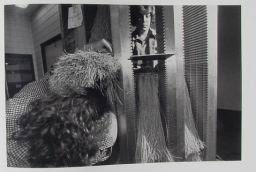Lee Friedlander Cray at Chippewa Falls
Hardcover. Fine dark orange linen cloth, with printed label affixed to front cover, no dust jacket as issued. Photographs by Lee Friedlander. 96 pp. with 79 full-page black and white reproductions. Includes a New copy of the four-page "Preview" publication, with 2 black and white plates, in matching stiff wrappers with self-closing flap. 12 3/8 x 11 5/8 inches. This book was commissioned as an in house publication by the president of Cray Research, on the occasion of the company's fifteenth anniversary. The book was never commercially available and was presented to company employees as a gift. This edition was limited to 5000 hardbound copies (the total number of signed at the time of publication as limited to 500, which comprise the limited edition). [Cited in Martin Parr and Gerry Badger, The Photobook: A History, Volume II. (London and New York: Phaidon, 2006). ] Signed by Author.
In 1976, Cray Research, Inc. delivered its first supercomputer to the Los Alamos National Laboratory, birthplace of the atomic bomb. The Cray-1, as it was known, was the fastest computer in the world and was a blend of Cray’s unique engineering style and an urgency for high performance computing borne of cold war competition between the United States and the Soviet Union.
For the next 30 years, Cray defined the limits of the possible for supercomputers by building the fastest machines in the world. In spite of the enormous influence on science and engineering of his machines, Seymour Cray himself worked in small groups in rural America and shunned publicity.
How could this one man and his hand-picked team of people build the fastest computers in the world? What does the Cray-1 tell us about the engineering, social and economic factors that coalesce into creating a stable technological artifact? Why did much larger computer companies abandon the field of supercomputing to this small but powerful foe? What, exactly, were these incredible machines used for?
These and other themes of the life and machines of Seymour Cray will be explored at the Computer History Museum in a panel lecture celebrating the Cray-1’s 30th anniversary. Panelists include: Bill Buzbee (Los Alamos, NCAR), Bo Ewald (Los Alamos, Cray) and Jack Worlton (Los Alamos). Burton Smith (Tera, Cray) will be the evening’s panel moderator.
A special gala photography exhibit of Cray Research by renowned American photographer Lee Friedlander will also be featured this night.
In 1975, as part of a special commission, American master photographer Lee Friedlander took these photographs at Cray Research, Inc., Chippewa Falls, Wisconsin, birthplace of the Cray-1 supercomputer—then the fastest computer in the world.
The result was a landmark visual record documenting the assembly of this awe-inspiring machine and the people who made it. These photos formed part of a commemorative book given to Cray employees and a limited-edition set of photographs, part of which form this photo exhibit. See for a review ...





























Geen opmerkingen:
Een reactie posten